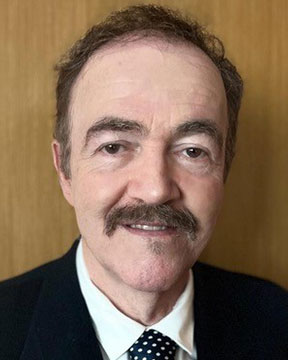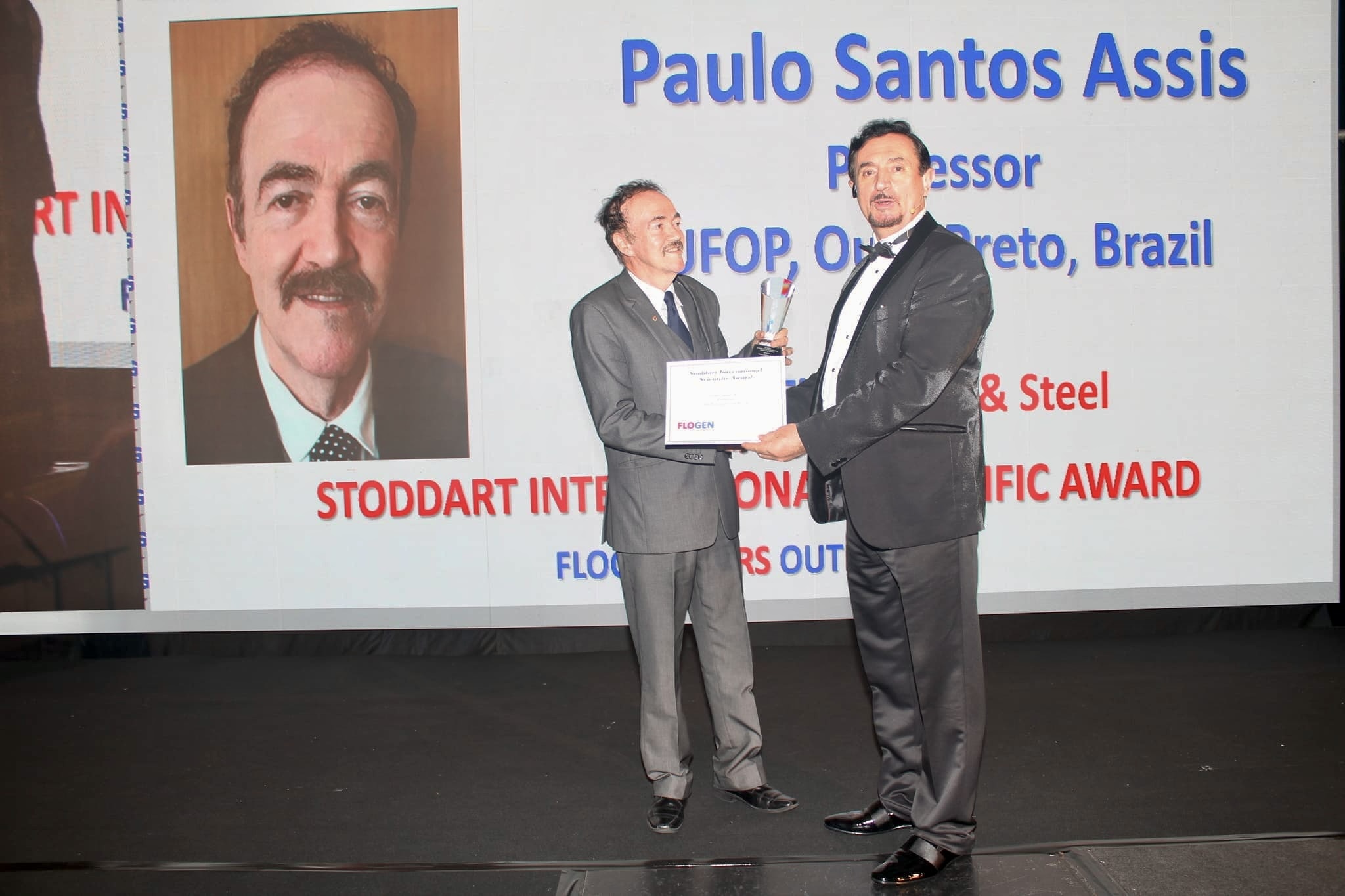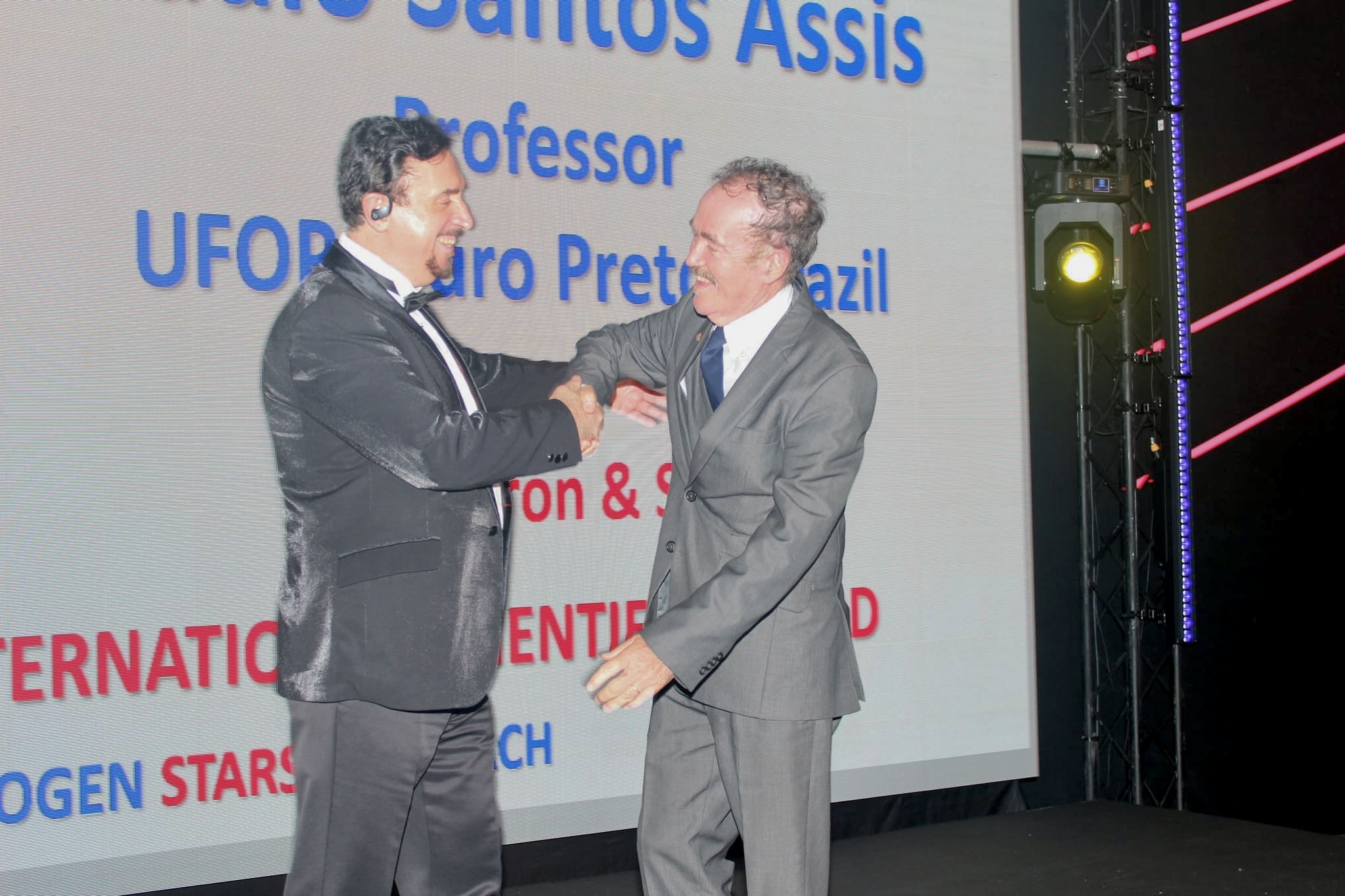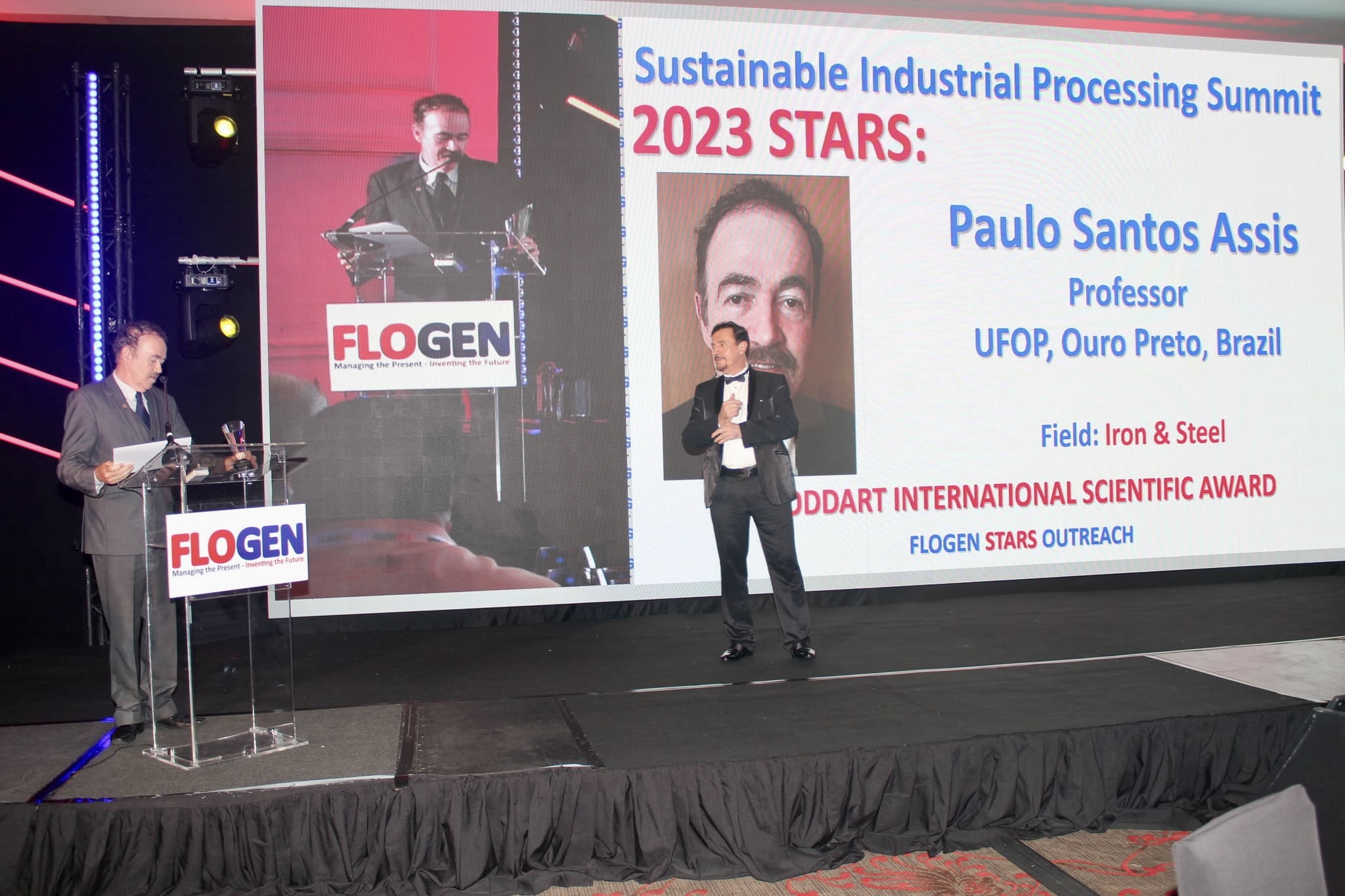
Paulo Santos Assis, 70, was educated at Escola de Engenharia from Federal University of Minas (UFMG), one of leading Brazilian Center of Higher education and Research. He got his bachelor as Metallurgical Engineer in 1975, granted with a Gold Medal Alcindo Vieira. After that, He worked at Acesita (now APERAM) in the Metallurgy Dept, where he developed and joined colleagues for improving iron and steelmaking process. During his time and work at Acesita he has worked hard on the Charcoal Pulverized Injection into Charcoal Blast Furnaces. He finished his Master of Science at UFMG, 1978. Three years afterwards Acesita started to inject Charcoal Powder Injection into the biggest worldwide Blast Furnace. It passed 42 years from this development; the company was awarded more than 100 million Euros because of this process developed by him with colleagues from Acesita. He developed a Mathematical Model for the Blast Furnace, similar to IRSID (nstitut of Siderurgie, in France) during his Master. In 1984 he was invited to work at Mannesmann (now Vallourec), in Belo Horizonte, where he was responsible for developing new system for injecting charcoal powder in the blast furnace number 1 of that company. He got success and based on this primary result He was invited to stay in Germany to work with Küttner GmbH, in Essen, for developing high density powder injection. As soon as RWTH Aachen knew it, then Prof Heinrich Wilhelm Gudenau invited M.Sc. Assis to make his doctor at this University. He started to develop his Dr. Thesis in 1987, and finished in 1991, defending his Dr Thesis at 19th February 1991. His PhD Thesis permitted Mannesmann to reach the record figure on Charcoal Injection (195 kg/t hot metal) in its Blast Furnace number 1.
After he got his Dr Title at RWTH Aachen, he worked two and half years more at Mannesmann S.A. in Belo Horizonte, then Federal University of Ouro Preto opened an exam to supply an area of Iron and Steelmaking. He applied for this exam and passed, because his dream was to give lectures and make research in Universities. Before to sign his entering at the University, CSN (Companhia Siderúrgica Nacional) invited him to work with an International Group to implement his Graduate Course in Volta Redonda, where he worked jointly as Professor from UFOP, collaborating in this Group. At that time he organized ten years plan for UFOP to access technologies in Japan, South Korea, China and India.
He worked as Director of Minas Gerais ABM, from 1996 till 2001. This year he was invited to work at FAPEMIG in the Engineering and Architecture Camera for project Analysis for giving Grants for many projects Statewide. He was there for 4 years. Before that he worked and aided the start of REDEMAT (Materials Net for Graduate Materials Engineering). Since that time he guided more than 35 M.Sc and more than 10 PhD Students. Additionally, because his international relationship, He got cerca of 6 pos-PhD in this group of Research and Development.
In 2003 he started to work with biomass, just to use the residues coming from Agriculture to generate gas to be used in the iron and steel production or even to generate electricity. Initially he got a Kitchen Microwave Furnace and started with a Student to pyrolysis a sugar cane bagasse. After the first research, a Metallurgical Engineer asked me to work with Eucalyptus. Then he was proven that it will be possible to produce charcoal by using Microwave. A company was opened in Uberaba City, at UNIUBE (a private University) and based on the experience done by a Scientist Ricardo Naufel, in that University and then cooperation was closed between these two institutions (UFOP/UNIUBE) to start a project for pyrolysis of wood to produce electricity and charcoal. This project last 4 years and Project and Engineering were finalized. Many under-Grad and Grad-Student have worked in this project
In 2008, he started to work with Biology Group of UFMG, first to treat wastes from Iron and Steelmaking, and then he developed jointly with them a patent for treating waste to produce biogas. In the first project it was proven that Phosphorus content of some wastes can bereduced more than 90% just using Bacteria. In the second by using a Bio digester it was possible to produce biogas, after 10 or 15 days with high content of Methane (more than 60% in volume). Based on this it was proposed a new iron and steelmaking model by using 100% of biogas in the Direct Reduction Process (DRP). He calculated that using biogas in Brazil; the steelproduction can reach around 500 million metric tons in a year. That means the GHG emission can be avoided just using biogas into the DRP to produce sponge iron and this one will be used in the Electric Arc Furnace (EAF).
2011, he worked with students from Environment and Metallurgical Engineering to open a Start-up at UFOP. This start-up was opened as EcoEnviroX (Ecology, Environment and Energy). It is still in operation working with many companies in Brazil and Worldwide. He is Council Member of this Company.
During his international Visit he knew Prof. Tateo Usui. He invited him to work with him for ten years back. Prof. Usui came from Japan to Brazil and joined his research Group in Brazil to work with biomass and GHG emissions reductions. With him, Prof. Usui worked at UFOP during 6 months, and then returned to present a Key Lecture in the ABM International Congress next year. He continued with joint research with prof. Usui until 2020.
2012, An Indian professor, Niloy Kumar Nath from Pune College of Engineering was invited to stay in Ouro Preto to give lectures on Mathematical Modelling for Iron and Steel production with him. This course was given for Students and Engineers from Gerdau and Magnesita. Some projects arose from this course and researches.
2014, He invited prof. Dr Jürgen Straub, from Reutlingen Universität to give lectures about Water. He organized a course for Under-Grad Student and Grad Student. This course was offered in one Week and has many participants from companies and prefectures.
From 2013 until 2017 he was elected to be president of Graduate Program of REDEMAT, where he got many Master and PhD Students. After that, he collaborated with some companies in Araxá, Minas Gerais. He opened a Specialization Course on Materials Engineering with 35 Grad. Students. At the same time he was the coordinator of a project to study the Golden Mussel for Cemig (Centrais Elétricas de Minas Gerais). This project was closed last year, with many and good results for understanding the behavior and the consequence of that animal in the Electricity Generation. Some Students under his Coordination is now studying how the Golden Mussel can be reduced its impact in Electricity Generation.
During his life until now He published more than 400 papers. His H-Index (March 20223) is 13. Assis received many researchers from Japan, India, China, USA, Germany and has invited to give lectures in many Universities around the World: Japan, China, India, Germany, USA, Chile, Argentina. He is opened to receive any research and Scientist in his University to make joint collaboration; all the time related to Energy, Environment and Iron and Steelmaking.
Nowadays he has around 20 Grad-Students (Master and PhD) and 20 Under-Grad. Students. All of them are working on Energy, Environment and Iron and Steelmaking Processes.


